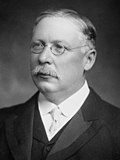| |||||||||||||||||||||||||||||||||||||||||||||||||||||||||||||||||||||||||||||||||||
41 seats in the Legislative Assembly of Alberta 21 seats were needed for a majority | |||||||||||||||||||||||||||||||||||||||||||||||||||||||||||||||||||||||||||||||||||
|---|---|---|---|---|---|---|---|---|---|---|---|---|---|---|---|---|---|---|---|---|---|---|---|---|---|---|---|---|---|---|---|---|---|---|---|---|---|---|---|---|---|---|---|---|---|---|---|---|---|---|---|---|---|---|---|---|---|---|---|---|---|---|---|---|---|---|---|---|---|---|---|---|---|---|---|---|---|---|---|---|---|---|---|
| |||||||||||||||||||||||||||||||||||||||||||||||||||||||||||||||||||||||||||||||||||
| |||||||||||||||||||||||||||||||||||||||||||||||||||||||||||||||||||||||||||||||||||
The 1909 Alberta general election was the second general election held in the Province of Alberta, Canada. It took place on March 22, 1909, to elect 41 members to the 2nd Alberta Legislature. The incumbent Liberal Party led by Premier Alexander C. Rutherford achieved a re-election victory, securing a majority government by winning 36 out of the 41 seats in the legislature with more than 59 percent of the popular vote. The Conservative Party led by Albert Robertson once again formed the official opposition, with only two members, and Robertson himself was defeated in his own seat in High River. The remaining three seats were divided among smaller parties and independent candidates.
Prior to the election, the Legislative Assembly passed An Act respecting the Legislative Assembly of Alberta in February 1909 which created an additional 16 seats in the Legislature, expanding from 25 members to a total of 41, and redistributed the boundaries of the provincial electoral districts.[1] As part of the redistricting process, the Crowsnest Pass region was separated from the Pincher Creek electoral district and established as its own district named Rocky Mountain. This new district had a significant population of coal miners, which was reflected in the election outcome with the election of a Socialist candidate. Due to the increased population and growth of Edmonton and Calgary, each city was granted an additional seat in the legislature. As a result, multi-seat districts were established in these cities, allowing voters to cast up to two votes using the block voting system. In Edmonton, two Liberal candidates were elected to represent the two seats, while in Calgary, one Liberal and one Conservative candidate emerged victorious. This marked the first instance in Alberta's political history where multiple-seat districts were used and mixed representation, with members from different parties, were elected in a district. (Each election from here until 1955 would have at least one multiple-seat district.)[2]
The election in the Athabasca electoral district was conducted on July 15, 1909, due to the remoteness of the riding.[3]
Despite the election being an overwhelming success for the Liberal government of Premier Rutherford, his administration was embroiled with the Alberta and Great Waterways Railway scandal shortly after the election. The scandal divided the Liberal Party and forced Rutherford to resign in 1910. Arthur Sifton, Alberta's chief justice was selected as the second Premier of Alberta in an effort to restore party unity.
- ^ An Act respecting the Legislative Assembly of Alberta, SA 1909, c 2, retrieved from CanLII on December 9, 2021
- ^ A Report on Alberta Elections. pp. 25–81.
- ^ Saturday News, April 7, 1909, p. 1


